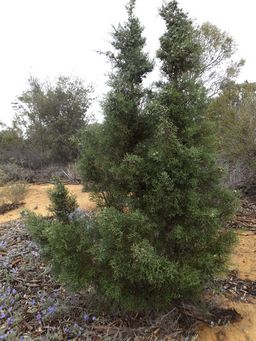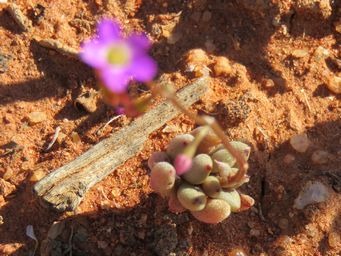
Australia So Much to See
Copyright (C) 2013 AustraliaSoMuchtoSee.com. All reights reserved
Sources used for identification of wildflowers shown on these pages and regions where they occur see Credits
These pages will
feature some of the wildflowers we have photographed in Western Australia, and where possible, identified. If you
are able to help identify further flowers, or correct any I may have wrong, please contact us.
Information given for each species
will give botanical name, known common names, describe the flower, give time of year it flowered, and where it was photographed, and
the areas it occurs in. Names have been matched to Florabase which has also been used to show distribution.
See some
of these wildflower in larger sized photos on our Flickr pages.
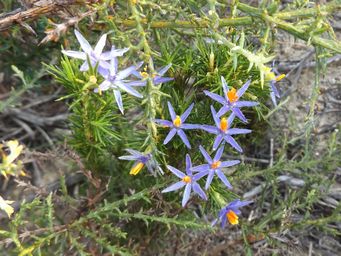
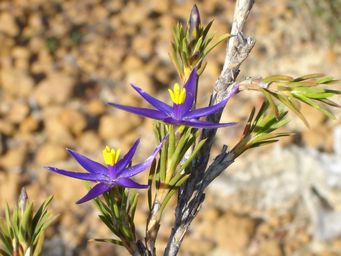
Calectasia grandiflora Blue Tinsel Lily
A five petalled purple star flower with bright yellow stamens
Spring
Above specimen was
photographed near Lancelin and the one above right near Lake Grace in the Wheatbelt and ranges from north of Perth, through the South
West and Great Southern Regions as well as parts of the Wheatbelt
Calectasia grandiflora Blue Tinsel Lily
A five petalled purple star flower with bright yellow stamens
Spring
Above specimen was
photographed near Lancelin and the one above right near Lake Grace in the Wheatbelt and ranges from north of Perth, through the South
West and Great Southern Regions as well as parts of the Wheatbelt
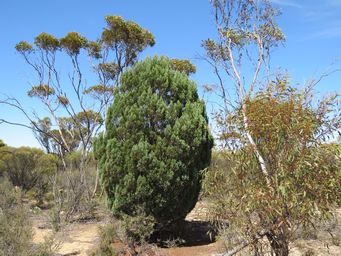
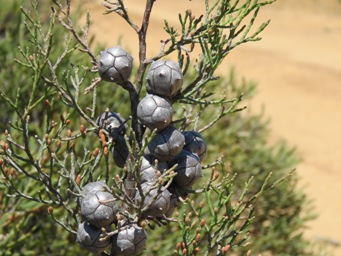
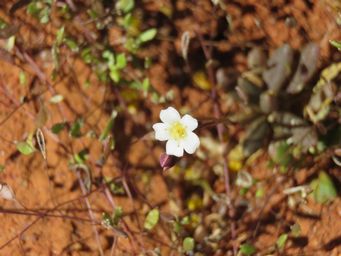
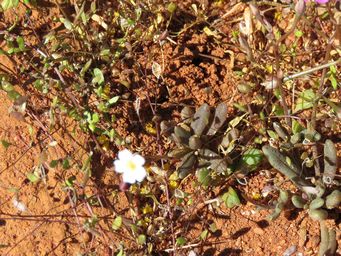
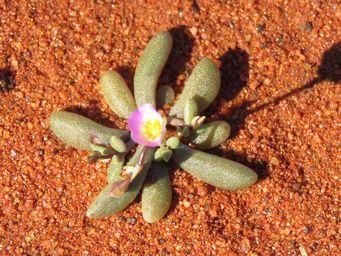
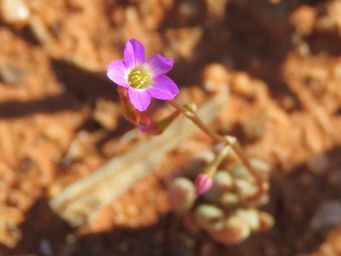
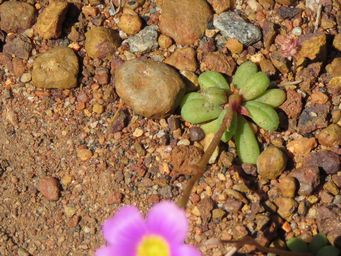
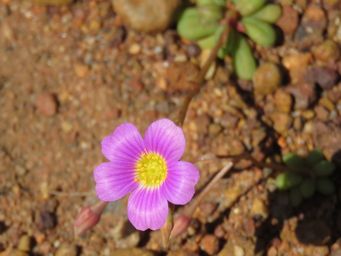
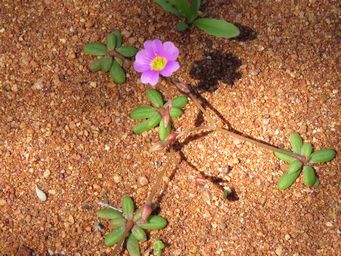
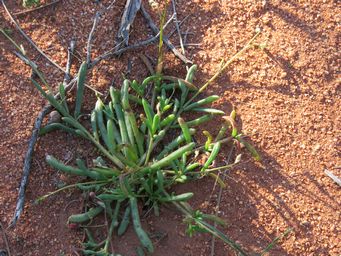
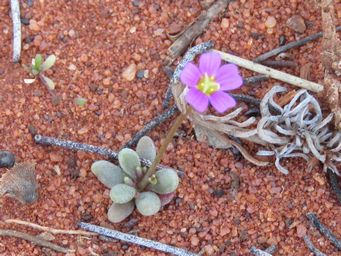
Calandrinia continued
Calandrinia are a low-growing, usually annual, succulent plant, with most species having vibrant pink flowers,
and are most often found in arid areas. There are around 60 species in Western Australian growing throughout the state, with
many being so similar that only the differences in their tiny seeds will tell them apart. Foliage is succulent to store moisture
for flowering, and may appear different as the moisture is drawn out of the leaves. Many species have flowers that are tiny. The
following have not been fully identified.
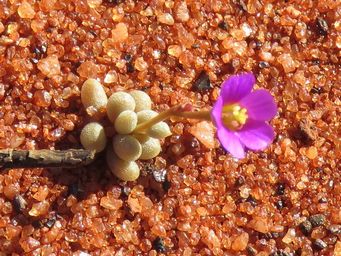
These larger Calandrinia may be Calandrinia polyandra.
Seen west of Sandstone in August.
These white Calandrinia may be a white variation of one of the other species in the area such are Calandrinia eremaea rather than
a separate white flowering species.
Seen near Pindar in August.
Unidentified tiny pink Calandrinia species. Above two different species were seen in red sand south of Menzies, but within the
Kalgoorlie-Boulder city council area.
Above left, with bobbly succulent foliage with a texture giving a frosted appearance appears
to be the same as the photos below, from south of Leinster in the shire of Leonora.
This may be Calandrinia eremaea
Seen north of Kalgoorlie in August.
With the only flower partially open this was unable to be positively identified. It may be Calandrinia remota. The foliage is
finer and longer than most species seen in the region. Seen west of Mount Magnet in or near a large claypan.
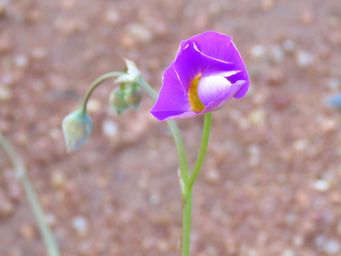
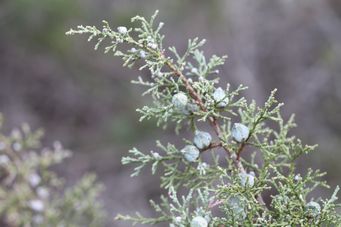
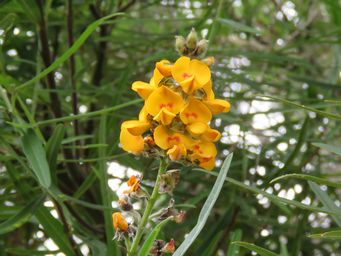
Callistachys lanceolata 1991 (formerly Oxylobium lanceolatum), Wonnich, Native Willow, Greenbush, Swamp Willow
A cluster of yellow
or orange pea flowers at the top of a tall upright shrub, which can grow to seven metres. Foliage consist of elongated leaves
with a prominent mid-rib, which tend to point upwards.
December
Northcliffe, and is found near coastal areas from Perth to Hopetoun
and through the lower South West and lower Great Southern regions.
Callitris pyramidalis 2010 (formerly Actinostrobus pyramidalis), Swan River Cypress, Swamp Cypress, King George's Cypress-Pine.
A Cypress
pine with patterned cones, showing splashes of green at the base. Trees can grow to eight metres.
September (cones stage
post flowering)
Marchagee, and found in the coastal Mid West, through the northern Wheatbelt, Great Southern, and into the South West
regions, and at Esperance.
Callistachys lanceolata, when known as Oxylobium lanceolatum is the shrub that the South West town of Greenbushes takes its name.
Greenbushes was named because of shrubs with bright green leaves which contrasted with the bluish-green leaves of the Eucalypt trees. These were Callistachys lanceolata (formerly Oxylobium lanceolatum), known as Native Willow, Greenbush, or Wonnich, a shrub which
can reach up to seven metres in height. They provided shade for travellers who stopped to refresh at a Greenbushes well.
Callitris canescens, Scrubby Cypress Pine, Morrison's cypress pine
A Cypress Pine shrub or tree. Unopened cones above right.
Photographed in November with well formed cones.
Above specimen tree was photographed near Kulin, and the cones at Dragon Rocks
Nature Reserve Newdegate. This Cypress Pine grows in sandy environments, breakaways and rocky areas, and around salt lakes through
the Mid West, Wheatbelt and Goldfields Regions
